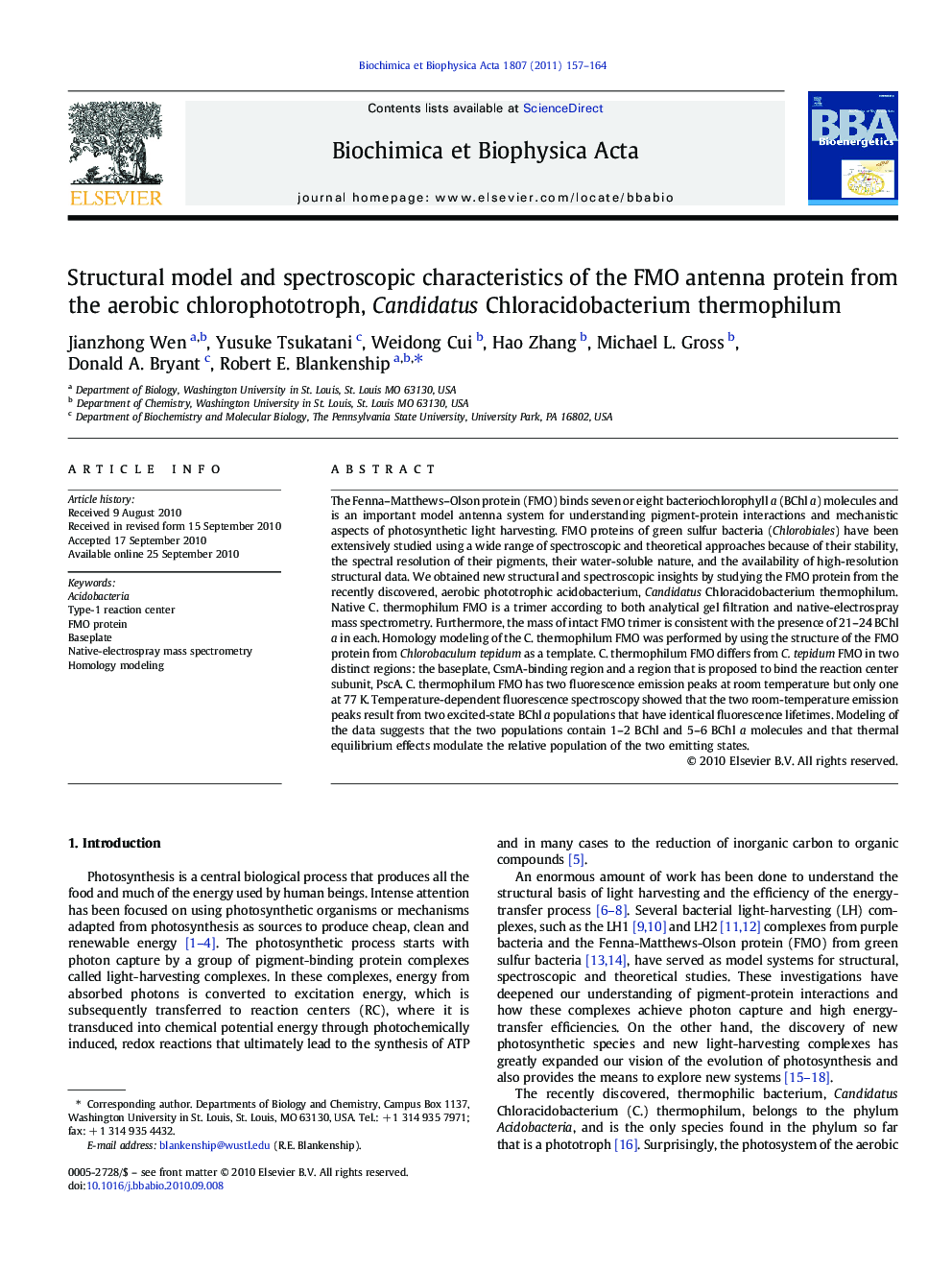| Article ID | Journal | Published Year | Pages | File Type |
|---|---|---|---|---|
| 1942751 | Biochimica et Biophysica Acta (BBA) - Bioenergetics | 2011 | 8 Pages |
The Fenna–Matthews–Olson protein (FMO) binds seven or eight bacteriochlorophyll a (BChl a) molecules and is an important model antenna system for understanding pigment-protein interactions and mechanistic aspects of photosynthetic light harvesting. FMO proteins of green sulfur bacteria (Chlorobiales) have been extensively studied using a wide range of spectroscopic and theoretical approaches because of their stability, the spectral resolution of their pigments, their water-soluble nature, and the availability of high-resolution structural data. We obtained new structural and spectroscopic insights by studying the FMO protein from the recently discovered, aerobic phototrophic acidobacterium, Candidatus Chloracidobacterium thermophilum. Native C. thermophilum FMO is a trimer according to both analytical gel filtration and native-electrospray mass spectrometry. Furthermore, the mass of intact FMO trimer is consistent with the presence of 21–24 BChl a in each. Homology modeling of the C. thermophilum FMO was performed by using the structure of the FMO protein from Chlorobaculum tepidum as a template. C. thermophilum FMO differs from C. tepidum FMO in two distinct regions: the baseplate, CsmA-binding region and a region that is proposed to bind the reaction center subunit, PscA. C. thermophilum FMO has two fluorescence emission peaks at room temperature but only one at 77 K. Temperature-dependent fluorescence spectroscopy showed that the two room-temperature emission peaks result from two excited-state BChl a populations that have identical fluorescence lifetimes. Modeling of the data suggests that the two populations contain 1–2 BChl and 5–6 BChl a molecules and that thermal equilibrium effects modulate the relative population of the two emitting states.
Graphical abstractFigure optionsDownload full-size imageDownload high-quality image (526 K)Download as PowerPoint slideResearch Highlights►Subunit and pigment stoichiometry of C. thermophilum FMO was determined. ►Structural model of C. thermophilum FMO by homology modeling. ►Identify CsmA and RC binding sites on the FMO antenna protein. ►Temperature-dependent fluorescence emission and lifetime of C thermophilum FMO.
